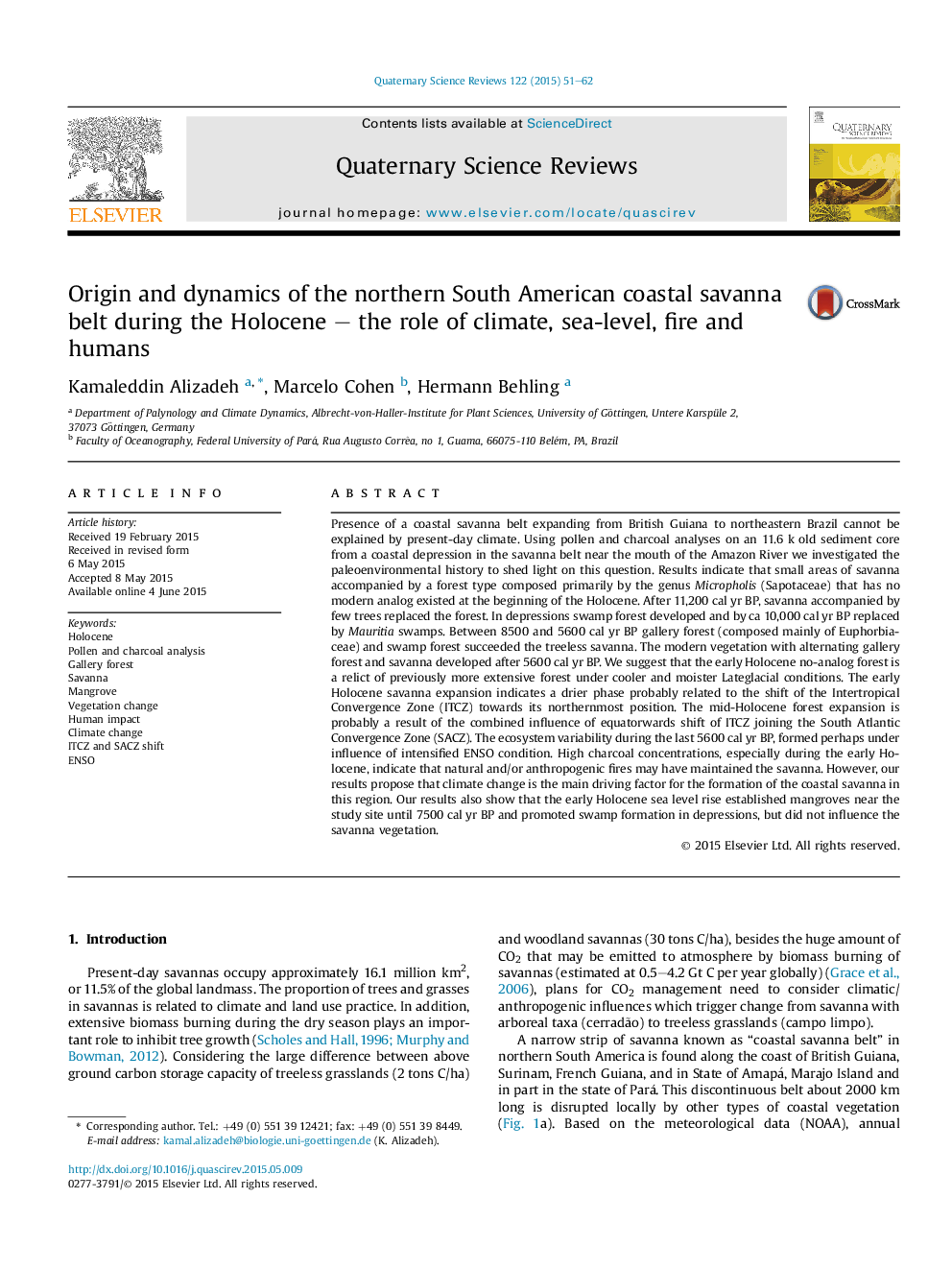| کد مقاله | کد نشریه | سال انتشار | مقاله انگلیسی | نسخه تمام متن |
|---|---|---|---|---|
| 6445852 | 1640812 | 2015 | 12 صفحه PDF | دانلود رایگان |
عنوان انگلیسی مقاله ISI
Origin and dynamics of the northern South American coastal savanna belt during the Holocene - the role of climate, sea-level, fire and humans
ترجمه فارسی عنوان
منشاء و پویایی کمربندهای ساوانا ساحل شمالی آمریکای جنوبی در طی هولوسن - نقش آب و هوا، سطح دریا، آتش و انسان
دانلود مقاله + سفارش ترجمه
دانلود مقاله ISI انگلیسی
رایگان برای ایرانیان
کلمات کلیدی
موضوعات مرتبط
مهندسی و علوم پایه
علوم زمین و سیارات
زمین شناسی
چکیده انگلیسی
Presence of a coastal savanna belt expanding from British Guiana to northeastern Brazil cannot be explained by present-day climate. Using pollen and charcoal analyses on an 11.6 k old sediment core from a coastal depression in the savanna belt near the mouth of the Amazon River we investigated the paleoenvironmental history to shed light on this question. Results indicate that small areas of savanna accompanied by a forest type composed primarily by the genus Micropholis (Sapotaceae) that has no modern analog existed at the beginning of the Holocene. After 11,200 cal yr BP, savanna accompanied by few trees replaced the forest. In depressions swamp forest developed and by ca 10,000 cal yr BP replaced by Mauritia swamps. Between 8500 and 5600 cal yr BP gallery forest (composed mainly of Euphorbiaceae) and swamp forest succeeded the treeless savanna. The modern vegetation with alternating gallery forest and savanna developed after 5600 cal yr BP. We suggest that the early Holocene no-analog forest is a relict of previously more extensive forest under cooler and moister Lateglacial conditions. The early Holocene savanna expansion indicates a drier phase probably related to the shift of the Intertropical Convergence Zone (ITCZ) towards its northernmost position. The mid-Holocene forest expansion is probably a result of the combined influence of equatorwards shift of ITCZ joining the South Atlantic Convergence Zone (SACZ). The ecosystem variability during the last 5600 cal yr BP, formed perhaps under influence of intensified ENSO condition. High charcoal concentrations, especially during the early Holocene, indicate that natural and/or anthropogenic fires may have maintained the savanna. However, our results propose that climate change is the main driving factor for the formation of the coastal savanna in this region. Our results also show that the early Holocene sea level rise established mangroves near the study site until 7500 cal yr BP and promoted swamp formation in depressions, but did not influence the savanna vegetation.
ناشر
Database: Elsevier - ScienceDirect (ساینس دایرکت)
Journal: Quaternary Science Reviews - Volume 122, 15 August 2015, Pages 51-62
Journal: Quaternary Science Reviews - Volume 122, 15 August 2015, Pages 51-62
نویسندگان
Kamaleddin Alizadeh, Marcelo Cohen, Hermann Behling,
